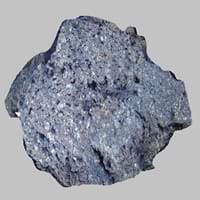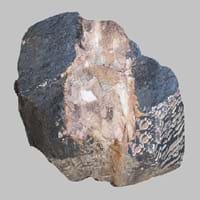Mugearite and Claystone
Definition
Definition
Mugearite is a type of oligoclase bearing basalt, also comprising of olivine, apatite, and opaque oxides
Claystone is a fine-grained, dark gray to pink sedimentary rock which mainly consists of compacted and hardened clay
History
Origin
Skye, Scotland
Unknown
Discoverer
Alfred Harker
Unknown
Etymology
From mugear + -ite
From English clay and stone as the rock contains more amount of clay
Class
Igneous Rocks
Sedimentary Rocks
Sub-Class
Durable Rock, Medium Hardness Rock
Durable Rock, Medium Hardness Rock
Family
Group
Volcanic
Not Applicable
Other Categories
Opaque Rock
Fine Grained Rock, Opaque Rock
Texture
Texture
Glassy, Massive, Porphyritic, Scoriaceous, Vesicular
Clastic
Color
Black, Brown, Light to Dark Grey
Black, Blue, Brown, Green, Grey, Orange, Red, White, Yellow
Maintenance
Less
More
Durability
Durable
Durable
Water Resistant
Yes
Yes
Scratch Resistant
Yes
Yes
Stain Resistant
Yes
No
Wind Resistant
No
No
Acid Resistant
No
No
Appearance
Dull and Soft
Rough and Dull
Uses
Architecture
Interior Uses
Floor Tiles, Flooring, Homes, Hotels
Decorative Aggregates, Entryways, Floor Tiles, Homes, Interior Decoration
Exterior Uses
As Building Stone, Garden Decoration
As Facing Stone, Roof Tiles
Other Architectural Uses
Curbing
Curbing
Industry
Construction Industry
As Dimension Stone, Cobblestones, Rail Track Ballast, Roadstone
As a Sintering Agent in Steel Industry to process Iron Ore, Cement Manufacture, Construction Aggregate, for Road Aggregate, Making natural cement, Raw material for the manufacture of mortar
Medical Industry
Not Yet Used
Not Yet Used
Antiquity Uses
Artifacts, Monuments, Sculpture
Artifacts, Sculpture, Small Figurines
Other Uses
Commercial Uses
Creating Artwork
Pottery
Types
Types
Alkaline Basalt, Boninite, High Alumina Basalt, Mid Ocean Ridge Basalt (MORB), Tholeiitic Basalt, Basaltic trachyandesite, Mugearite and Shoshonite
Not Available
Features
Has High structural resistance against erosion and climate, Very fine grained rock
Available in Lots of Colors and Patterns, Smooth to touch, Very fine grained rock
Archaeological Significance
Monuments
Used
Not Yet Used
Famous Monuments
Data Not Available
Not Applicable
Sculpture
Used
Used
Famous Sculptures
Data Not Available
Data Not Available
Pictographs
Used
Used
Petroglyphs
Used
Used
Figurines
Used
Used
Fossils
Absent
Present
Formation
Formation
Mugearite forms when lava reaches the Earth's surface near an active volcano. The temperature of lava is between 1100 to 1250° C when it gets to the surface.
Claystone is generally quite soft, but can be hard and brittle. It forms due to weathering of mudstone.
Composition
Mineral Content
Olivine, Plagioclase, Pyroxene
Biotite, Chlorite, Feldspar, Micas, Muscovite or Illite, Plagioclase, Pyrite, Quartz
Compound Content
Aluminium Oxide, CaO, Iron(III) Oxide, FeO, Potassium Oxide, MgO, MnO, Sodium Oxide, Phosphorus Pentoxide, Silicon Dioxide, Titanium Dioxide
Aluminium Oxide, Ca, NaCl, CaO, Iron(III) Oxide, MgO, Silicon Dioxide
Transformation
Metamorphism
Yes
No
Types of Metamorphism
Burial Metamorphism, Impact Metamorphism
Not Applicable
Weathering
Yes
Yes
Types of Weathering
Biological Weathering, Chemical Weathering
Biological Weathering, Chemical Weathering, Mechanical Weathering
Erosion
No
Yes
Types of Erosion
Not Applicable
Coastal Erosion, Water Erosion
Properties
Physical Properties
Hardness
6
3.5-4
Grain Size
Not Applicable
Fine Grained
Fracture
Conchoidal
Not Available
Streak
White to Grey
White
Porosity
Less Porous
Very Less Porous
Luster
Not Available
Dull
Compressive Strength
37.50 N/mm2
27
Not Available
Cleavage
Not Applicable
Perfect
Toughness
2.3
2.6
Specific Gravity
2.8-3
0
Transparency
Opaque
Opaque
Density
2.9-3.1 g/cm3
2-2.9 g/cm3
Thermal Properties
Specific Heat Capacity
0.84 kJ/Kg K
15
0.92 kJ/Kg K
10
Resistance
Heat Resistant, Pressure Resistant, Wear Resistant
Heat Resistant, Impact Resistant
Reserves
Deposits in Eastern Continents
Asia
India, Russia
Bangladesh, China, India, Russia
Africa
South Africa
Ethiopia, Kenya, Morocco, South Africa, Tanzania
Europe
Iceland
Austria, France, Germany, Greece, Italy, Romania, Scotland, Spain, Switzerland
Others
Not Yet Found
Not Yet Found
Deposits in Western Continents
North America
Canada, USA
Canada, Panama, USA
South America
Brazil
Bolivia, Chile, Colombia, Ecuador, Peru, Venezuela
Deposits in Oceania Continent
Australia
Not Yet Found
New South Wales, New Zealand, Queensland, Victoria, Western Australia
All about Mugearite and Claystone Properties
Know all about Mugearite and Claystone properties here. All properties of rocks are important as they define the type of rock and its application. Mugearite belongs to Igneous Rocks while Claystone belongs to Sedimentary Rocks.Texture of Mugearite is Glassy, Massive, Porphyritic, Scoriaceous, Vesicular whereas that of Claystone is Clastic. Mugearite appears Dull and Soft and Claystone appears Rough and Dull. The luster of Mugearite is not available while that of Claystone is dull. Mugearite is available in black, brown, light to dark grey colors whereas Claystone is available in black, blue, brown, green, grey, orange, red, white, yellow colors. The commercial uses of Mugearite are creating artwork and that of Claystone are pottery.
|
||
|
||
|










